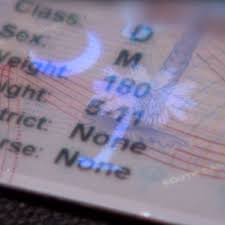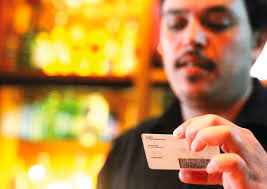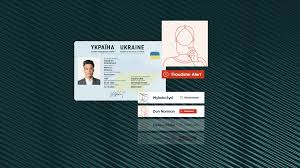Fake ID ISS number
Introduction: Unraveling the Mystery Behind Fake ID ISS Numbers
The introduction should set the stage by explaining why fake IDs are such a significant issue in the modern age. Fake ID technology has evolved, and with it, fraudsters have developed increasingly sophisticated methods to bypass checks and balances. A key part of many fake IDs is the ISS number, which is often misunderstood but critical in identifying legitimate identification cards from fake ones.
Key elements:
- Definition of a fake ID ISS number
- Why it’s essential for both fraudsters and those verifying IDs
- The role of ISS numbers in modern ID verification systems
Example:
"Whether it's for entering age-restricted venues or evading law enforcement, fake IDs are a rising trend. One piece of information that can determine the authenticity of these documents is the often overlooked ISS number."
Chapter 1: What is an ISS Number on an ID Card?
This section breaks down what an ISS number is and its role in identification cards. Understanding the structure and purpose of the ISS (Issuing) number is crucial.
Key elements:
- Explanation of what an ISS number is
- How it is assigned to an individual’s ID
- Connection between ISS numbers and the government or state agency that issues them
- The appearance of ISS numbers on real vs. fake IDs
Example: "An ISS number is an important identifier found on ID cards, particularly driver’s licenses. It denotes the issuance state and the version of the card, helping law enforcement and businesses determine its legitimacy. Fake ID makers often mimic these numbers, but there are distinct features that make them detectable."
Chapter 2: The Anatomy of a Fake ID: How ISS Numbers Play a Role
This section will focus on how fake ID manufacturers replicate or alter ISS numbers to make their IDs look legitimate. It will also discuss the flaws that may exist in fake IDs, helping readers understand the techniques used by fraudsters.
Key elements:
- Breakdown of common techniques used to fake ISS numbers
- How real and fake ISS numbers differ
- The challenges in creating believable fake ISS numbers
- Examples of counterfeit tactics used in fake IDs
Example: "Fraudsters have become adept at mimicking the features of real ID cards. However, small details such as incorrectly formatted ISS numbers or invalid state codes can be red flags that indicate a fake ID."
Chapter 3: How ISS Numbers Are Verified: The Technology Behind Identification Systems
Exploring how modern technology verifies ISS numbers, this section will delve into various verification systems used by governments, businesses, and security companies.
Key elements:
- Overview of the technology behind ISS number verification
- The role of barcodes, magnetic strips, and chip systems in ID verification
- How companies and law enforcement check for valid ISS numbers
- Examples of high-profile ID fraud cases where fake ISS numbers were used
Example: "Thanks to advancements in digital security, many businesses and government agencies now use automated systems to scan and verify ID cards, cross-referencing the ISS number with databases of authentic IDs."
Chapter 4: Fake ID Market Analysis: How Big Is the Problem?
This chapter will focus on market analysis, shedding light on the widespread issue of fake IDs.
Key elements:
- Global fake ID market statistics
- Insights into regions where fake IDs are more prevalent
- Factors contributing to the rise of fake ID creation
- The impact of fake IDs on governments and businesses
Example: "From nightclubs in the U.S. to banks in Europe, the use of fake IDs has spread like wildfire. A key component of this fraud is the ability to replicate features like the ISS number, which is often difficult to detect without proper tools."
Chapter 5: Why Do People Use Fake IDs? The Psychology Behind It
In this section, we’ll explore the reasons why individuals seek fake IDs, considering both legitimate and illegal motivations.
Key elements:
- The appeal of fake IDs for underage individuals
- Financial motivations behind obtaining fake IDs
- Other uses for fake IDs (e.g., evading law enforcement, identity theft)
- Insights from studies on the psychology behind fake ID usage
Example: "While underage drinking is one of the most well-known reasons for using a fake ID, there are far more complex psychological and financial reasons why people turn to fake documentation."
Chapter 6: The Consequences of Using Fake IDs: Legal and Financial Risks
This chapter will cover the potential consequences of using or producing fake IDs, including the legal and financial repercussions for those caught.
Key elements:
- Legal consequences of using a fake ID
- Financial penalties associated with fake ID production and usage
- Impact on personal and professional lives
- High-profile cases of fake ID usage and their outcomes
Example: "Getting caught with a fake ID can have lifelong consequences. Not only can it result in hefty fines and jail time, but it can also affect employment opportunities, leaving a permanent mark on your record."
Chapter 7: Target Audience for Fake IDs: Who’s Using Them?
This section focuses on identifying the target audience for fake IDs, with a breakdown of various demographics and their motivations.
Key elements:
- Demographic analysis (age, location, socioeconomic status)
- Why certain groups are more likely to use fake IDs
- Regional trends in fake ID usage
- The relationship between online markets and the fake ID audience
Example: "While college students represent a significant portion of the fake ID user base, individuals seeking fake IDs for identity theft or financial fraud are on the rise."
Chapter 8: How to Spot a Fake ID: Tips for Businesses and Law Enforcement
Practical tips for detecting fake IDs, specifically focusing on the ISS number as one of the key features to look out for.
Key elements:
- Tips on how to quickly verify the authenticity of an ISS number
- Tools and technology businesses can use to spot fake IDs
- Common red flags associated with fake IDs
- Examples from law enforcement on how they detect fake IDs
Example: "While many fake IDs may seem legitimate at first glance, discrepancies in the ISS number format, state code, or issuance date can indicate fraud. Knowing how to spot these signs can save businesses from significant legal trouble."
Chapter 9: The Future of Fake ID Detection: What Lies Ahead?
This forward-looking section will explore emerging technologies and practices that aim to curb the rise of fake IDs.
Key elements:
- Artificial intelligence and machine learning in ID verification
- The future of biometric security for ID cards
- Predictions for future trends in fake ID creation and detection
- How governments are tightening regulations to combat fake IDs
Example: "With the rise of AI-driven verification systems, the days of fake IDs slipping through the cracks are numbered. Soon, biometric systems and enhanced verification protocols will make it even harder for fraudsters to bypass security checks."
Conclusion: Why Understanding Fake ID ISS Numbers Matters
The conclusion should summarize the importance of understanding fake ID ISS numbers and how both businesses and individuals can protect themselves from falling victim to fake identification.
Example: "In a world where fake IDs are becoming increasingly sophisticated, the ISS number remains a vital tool in the fight against fraud. By knowing how to spot a fake ISS number and implementing advanced verification systems, we can help reduce the prevalence of fake IDs and protect businesses, individuals, and governments from the risks associated with identification fraud."
 Buy Fake University ID
Buy Fake University ID
 ID security features
ID security features
 University ID Cards
University ID Cards
 novelty identification
novelty identification
 Fake University ID
Fake University ID
 University security solutions
University security solutions
 Fake ID
Fake ID

